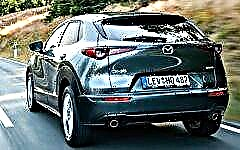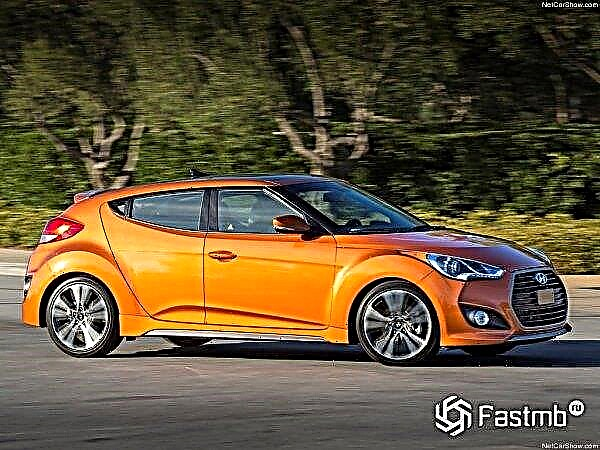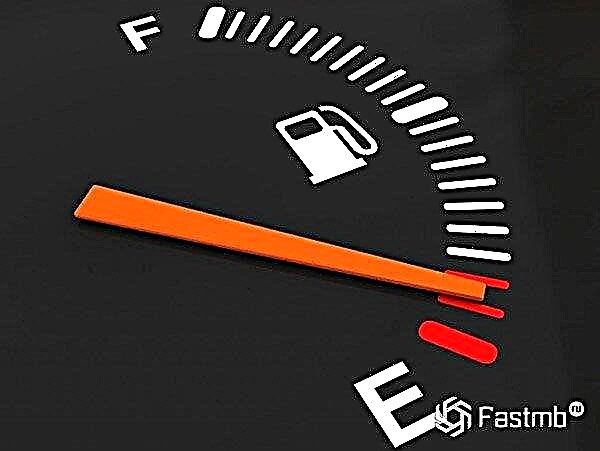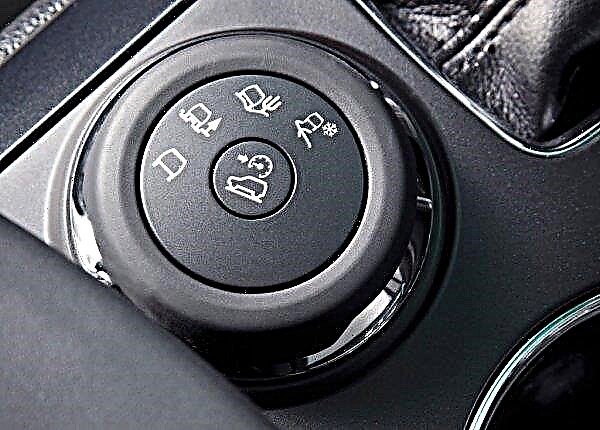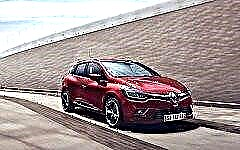

The content of the article:
- Renault clio
- Citroen c3
- Seat leon
- Skoda Octavia Greenline
- Volkswagen golf
- Vauxhall corsa
- Peugeot 208
Many motorists, all other things being equal, tend to choose the most economical cars. European automakers are well aware of this, so they always develop a line of low-cost models that consume little fuel and at the same time comply with environmental standards.
In our review - 7 of the most economical cars made in Europe.
1. Renault Clio

In the photo: Renault Clio
The car went into sale in 2016. The main goal of the engineers was to create a car that almost any car enthusiast can afford. The result is a modification, complete with a 5-speed manual and a 1.5-liter engine with a fuel consumption of just 5.7 liters per hundred kilometers in mixed driving.
The power of the power unit is 75 hp, which pleasantly reduces the cost of the transport tax.
A distinctive feature of this car, based on the Renault DeZir concept platform, is the hatchback-only version. Engineers have created the least voracious engine for cars with a similar body, which made Renault Clio one of the bestsellers in Europe.
This is a real family car, reliable and maintainable. In almost every service, routine maintenance can be done, which reduces the cost of maintaining a vehicle.
Visually, Renault Clio is very well remembered: the designers took the new corporate style of Renault as a basis and diluted it with sporty notes in the style of Formula 1. Some elements, for example, a separate exhaust is not only a visual component, but also performs a utilitarian function to increase the efficiency of exhaust gases.
The salon is spacious and comfortable, and all controls are located as conveniently as possible. Even the simplest equipment has everything you need for a modern car enthusiast.
2. Citroen C3

In the photo: Citroen C3
The most economical is the version with a 1.6-liter 75-horsepower engine and a manual transmission, which are combined in an ideal pair for city trips.
Fuel consumption with such a unit is only 5.5 liters per 100 kilometers. Whereas the modification with automatic transmission consumes more fuel due to the peculiarities of gear shifting.
The engine meets all modern environmental safety standards, has a high throttle response, and shows itself equally well both in urban areas and during long-term driving on a suburban highway.
Visually, the Citroen C3 looks pretty pretty, no aggression, only smooth lines, the velor interior gives the impression of high cost, and modern devices add a kind of aesthetics to the interior decoration.
For the comfort of the driver, even in the basic configuration, there is a drive for mirrors and power windows. As additional options, you can consider:
- climate control;
- heated seats;
- control of the audio system from the steering wheel.
In general, the car is very pleasant, comfortable and has many advantages besides low fuel consumption.
3. Seat Leon

In the photo: Seat Leon
Our car enthusiasts are not very familiar with Spanish-made cars, although there are quite a few more than decent models among them.
This car with an engine capacity of 1.6 liters and a power of 90 hp. consumes only 5 liters of fuel. As a base, the MQB platform provided by Volkswagen is used, which differs in the transverse arrangement of the engine, as well as some technical features of the suspension and body.
Together, this helped to minimize the weight of the machine without reducing its useful volume. The result is a spacious and comfortable interior.
To achieve the highest efficiency, a modern fuel distribution system is used, in which, thanks to point injection, it is possible to use the fuel as efficiently as possible.
The system is complemented by precise ignition control, which makes it possible to increase engine efficiency, reducing overall fuel consumption while maintaining power.
There is a choice of one of three motor control modes:
- eco;
- comfort;
- sport.
The greatest efficiency is achieved with the "eco" mode, although the owners noted some loss of throttle response.
The basic equipment does not impress with its extensive capabilities, although it has an electric drive for mirrors, a function for memorizing chair and steering wheel settings, and an air conditioner. In general, this is a very comfortable and reliable car with all the necessary functionality.
4. Skoda Octavia Greenline

In the photo: Skoda Octavia Greenline
The latest generation of this car pleases with efficiency. The most effective modification is a 1.6-liter 110-horsepower engine, which requires only 3.8 liters of gasoline per 100 kilometers.
This modification differs from the "relative" Skoda Octavia only in the engine and gearbox, the rest of the components and technical features are standard for the brand.
Pleasantly pleased with the reduced cost of the Skoda Octavia Greenline, which indicates that the manufacturer has decided to make a real car for people with little income. Thus, with good technical characteristics and a pleasant appearance, motorists will be able to save both on the purchase of a vehicle and on refueling it.
5. Volkswagen Golf

In the photo: Volkswagen Golf Blue Motion
We are talking about a specialized modification - Blue Motion. The version was created directly with the aim of competing with other models that differ in the minimum consumption.
The idea was a success for the German engineers - the fuel consumption of the model is only 4.6 liters per 100 kilometers. "Fly in the ointment" can be called the cost that you have to pay for an economical motor.
Since the modification was specially made to achieve minimum fuel consumption, some energy-intensive components, including the air conditioner, had to be removed from the car.
Also, the original settings of the engine control unit were used, which gave good savings. However, this measure affected the acceleration, which became noticeably slower, which is noticeable in test tests in comparison with other modifications of the Volkswagen Golf.
As with all Volkswagen models, a galvanized body is available. This characteristic is especially appreciated in our country, helping to extend the life of a car without body repair.
Despite belonging to the economy segment, you can find all the main "chips" that the Golf is equipped with in Blue Motion. For example, it is possible to customize the driver's seat for yourself, and you can configure several parameters at once.
There is also an adjustment of the departure and tilt of the steering wheel, depending on the wishes of the owner. Finally, there is a complete multimedia package and navigation, and the digital panel will allow you to control all important parameters while driving.
6. Vauxhall Corsa

In the photo: Vauxhall Corsa
The Vauxhall Corsa car is not very widespread in Russia and is not familiar to motorists. Meanwhile, this British-made model can boast of high efficiency - 4.4 l / 100 kilometers. This is an excellent result for a fairly massive vehicle.
An impressive hatchback in its last generations is distinguished by its economy, which is influenced by such factors as:
- use of lightweight materials in the body;
- optimization of the engine control unit;
- application of modern technologies in the fuel supply system;
- original manual transmission.
Despite its size, the model belongs to the subcompact, having a 1.3-liter 75-horsepower engine.
The main purpose of the car is for everyday trips around the city and for family use. The model performs well in traffic jams, practically without increasing consumption. But on the track, the car is less comfortable, with prolonged overtaking, a lack of power is felt.
The salon is comfortable, allowing up to 3 people to sit in the back seat. If necessary, the rear sofa can be folded out, almost doubling the volume of the trunk.
Despite its good driving characteristics, the car is rarely found outside Foggy Albion.
7. Peugeot 208

In the photo: Peugeot 208
It is the record holder among European cars, consuming only 4.2 liters of fuel per 100 kilometers in mixed style. Such an impressive consumption is only possible in the version with a manual transmission.
The subcompact French hatchback has a 1.2-liter 3-cylinder engine that, together with an efficient transmission and engine ECU settings, delivers fantastic fuel economy figures. At the same time, the Peugeot 208 has a high throttle response, excellently showing itself both at a rapid start and during maneuvers and overtaking.
The disadvantage can be considered a small trunk, which, if necessary, expands by folding the rear seats. The driver's seat can be customized to suit individual needs.
The dashboard is made in the form of a modern digital screen, from where you can make any settings for all important systems.
Even in the basic version, there is a high-quality multimedia system, and safety is ensured by a number of different functions, ranging from ABS and airbags to controlled damping of the impact force by the body.
Conclusion
European automakers have been looking to lower fuel consumption from the very beginning. This is a major difference from the American auto industry, where engineers are more focused on sales, speed, power and design, with powertrain efficiency being the last thing.
Therefore, if a motorist chooses a non-gluttonous vehicle, whose refueling will cost enormous sums, then he should consider representatives of the European car industry.

